The men who sell Brooklyn’s cool
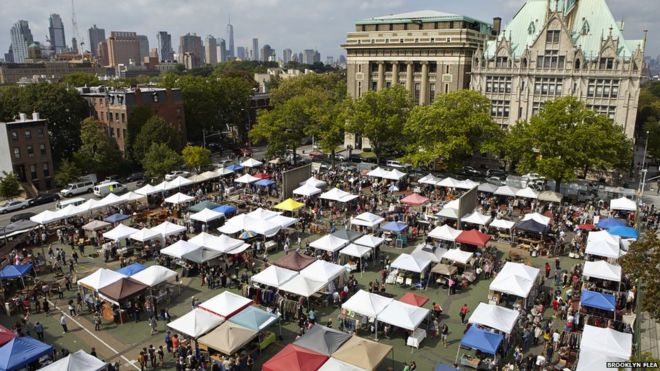 Image copyrightBrooklyn Flea
Image copyrightBrooklyn Flea
It was over a glass or two of bourbon that friends Eric Demby and Jonathan Butler hatched their plan to tap into the undeniable coolness of Brooklyn.
Over the past decade, New York's most populous borough has emerged from the shadow of Manhattan to become the most fashionable part of the largest city in the US.
Helped by its cheaper rents compared with Manhattan, artists and hip young people have breathed new life into Brooklyn.
This has established a creative culture and atmosphere that started in neighbourhoods like Williamsburg and Fort Greene before spreading out across the borough.
Mr Demby and Mr Butler's idea was to create a street market to bring together Brooklyn's new-found artistic culture and renewed community spirit.
And so in 2008 they rented out a large school yard and launched Brooklyn Flea, a street bazaar for vendors selling antiques, crafts and food.
Brooklyn Flea was an immediate success, and quickly grew.
 Image copyrightBrooklyn Flea
Image copyrightBrooklyn Flea
Today it is the most popular street market in New York, and from April to November typically hosts 140 vendors every Saturday and Sunday across two outdoor locations. And from December to March it is held at an equally popular indoor venue.
Sister business Smorgasburg started in 2011, and is an all-food street market inspired by the US's food truck craze, and typically hosts 100 vendors. Just as successful, like Brooklyn Flea it also moves indoors during the colder months.
'Right timing'
Mr Butler, 46, and Mr Demby, 43, had both themselves joined the migration across the East River from Manhattan to Brooklyn, moving in the early 2000s in search of cheaper rents.
They met while Mr Demby was working as a speechwriter for the Brooklyn borough president, and Mr Butler owned and ran popular real estate blog Brownstoner.
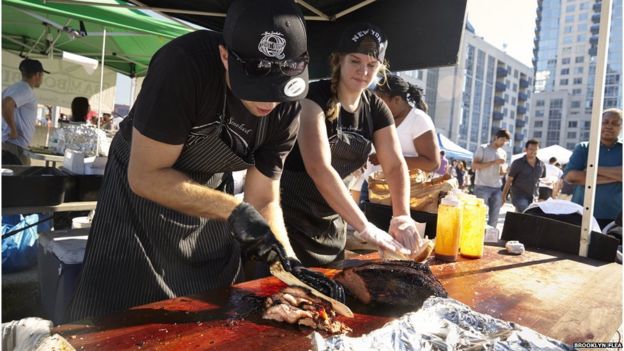 Image copyrightBrooklyn Flea
Image copyrightBrooklyn Flea
After coming up with the idea of setting up a street market, they both realised that it would likely work in Brooklyn where it would not have been possible in Manhattan due to a lack of available - and affordable - land.
"The real estate boom had conspired against the flea markets in Manhattan," says Mr Butler.
Helped by being able to use Brownstoner to promote Booklyn Flea, they were able to attract 100 vendors and about 1,500 visitors to their first market.
Mr Butler, who also used money from the housing market blog to start the Flea, says that while they benefited from being in the right place at the same time, he and Mr Demby also had to put a considerable amount of time and effort into their business.
"It's hard for something to succeed without the right timing, but that's not sufficient," says My Butler.
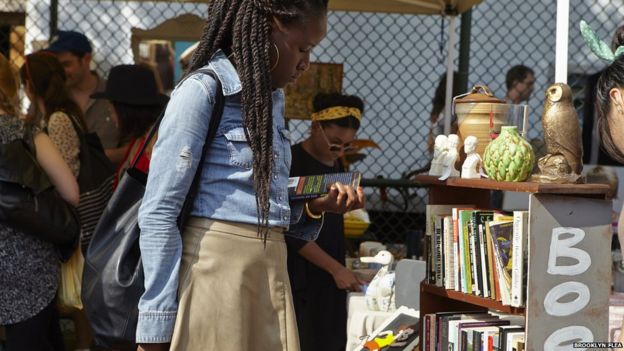 Image copyrightBrooklyn Flea
Image copyrightBrooklyn Flea
With the real estate blog sold in 2014, the pair now run Flea and Smorgasburg full time, using the money the markets generate to keep growing.
A hallmark of the markets' success is not just that they are places to buy things, but places to be seen.
"Even if they aren't in the market for anything particular people come to rub shoulders with their neighbours," say Mr Butler.
And bringing more people ensures the vendors in the market continue to flourish.
Launch pad
For many small businesses, launching themselves at either the Flea or Smorgasburg makes more economic sense than opening their own shops - the rent is significantly cheaper, and the stalls only need to be open one or two days a week.
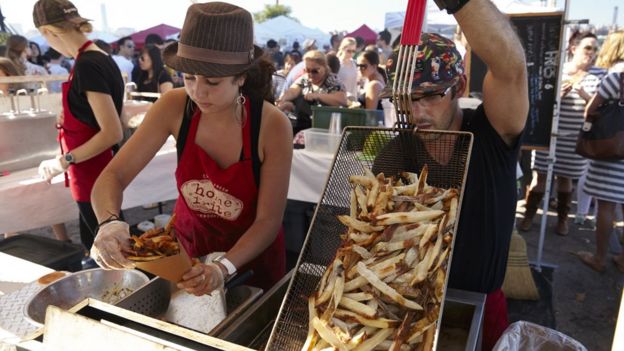 Image copyrightJohn von Pamer
Image copyrightJohn von Pamer
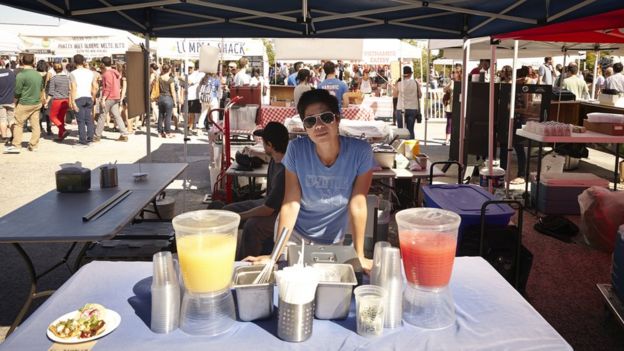 Image copyrightJohn von Pamer
Image copyrightJohn von Pamer
Yet the more ambitious ones use the two markets are springboards for wider expansion, such as barbeque restaurant chain Mighty Quinn's.
After launching at Smorgasburg, Mighty Quinn's has gone on to open four bricks and mortar outlets in Manhattan, and another in New Jersey. A new branch is also due to open in Taipei, Taiwan, of all places.
"Smorgasburg was a great opportunity to prove our concept was really viable in New York," says Micha Magid, co-founder of Mighty Quinn's.
Despite Mighty Quinn's soon to be global reach, it maintains its presence at Smorgasburg.
Mr Demby adds that when businesses such as Mighty Quinn's start to open their own stores it creates "a sense of pride" among the market community.
Beer hall
The business model behind the Flea's and Smorgasburg's success is relatively simple.
Mr Butler and Mr Demby rent space for the markets, and charge vendors between 0 and 5 (£100 to £183) to set up stalls for the day.
 Image copyrightBrooklyn Flea
Image copyrightBrooklyn Flea
The success of the two markets has increased the competition to become a vendor, enabling Mr Butler and Mr Demby to be highly selective about which stalls they pick, ensuring it keeps its cool factor.
Attracting large, steady streams of shoppers and small businesses has also allowed the business partners to attract another important group in New York - real estate developers.
"We get approached by a lot of developers who think of us as a way to get people to their area," says Mr Demby.
After the success of the first Flea in the Fort Green area of Brooklyn, it was such a property developer who persuaded them to open a second market in Williamsburg, after he offered up an area of land at a discounted rate.
 Image copyrightKate Glicksberg
Image copyrightKate Glicksberg
Both locations now lure thousands of residents and tourists every weekend they're open.
New York City public advocate Letitia James, the city's second most senior politician, and who helped Mr Butler and Mr Demby find the first location for Brooklyn Flea, calls it a "community institution".
"It has resulted in significant economic impacts throughout the borough - allowing small businesses to prosper and introducing them to new clientele," Ms James says.
Mr Butler and Mr Demby say they may now look again at expanding outside of New York, although past attempts to open markets in Philadelphia and Washington DC failed to attract enough shoppers to keep them going past one season.
"They were places where we didn't have a granular feel for," says Mr Butler.
 Image copyrightJohn von Pamer
Image copyrightJohn von Pamer
Their most recent new endeavour- Berg'n - is a year-round beer hall in the Crown Heights area of Brooklyn that features four rotating food vendors.
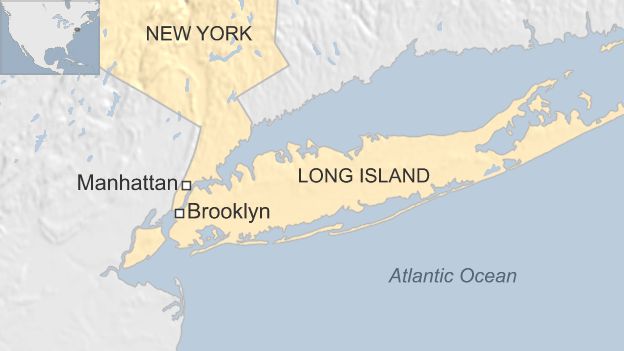
Back at the main two businesses, Mr Butler and Mr Demby will this month launch their latest round of Dragon's Den style interviews in January to find the newest vendors to join the line-ups of the Brooklyn Flea and Smorgasburg.
If previous years are any indication, hundreds of applications will come in for only a handful of spots, as vendors vie for the chance to grow their business in the incubator of coolness.
 ЗЕМЛЯ ЛЮДЕЙ
ЗЕМЛЯ ЛЮДЕЙ